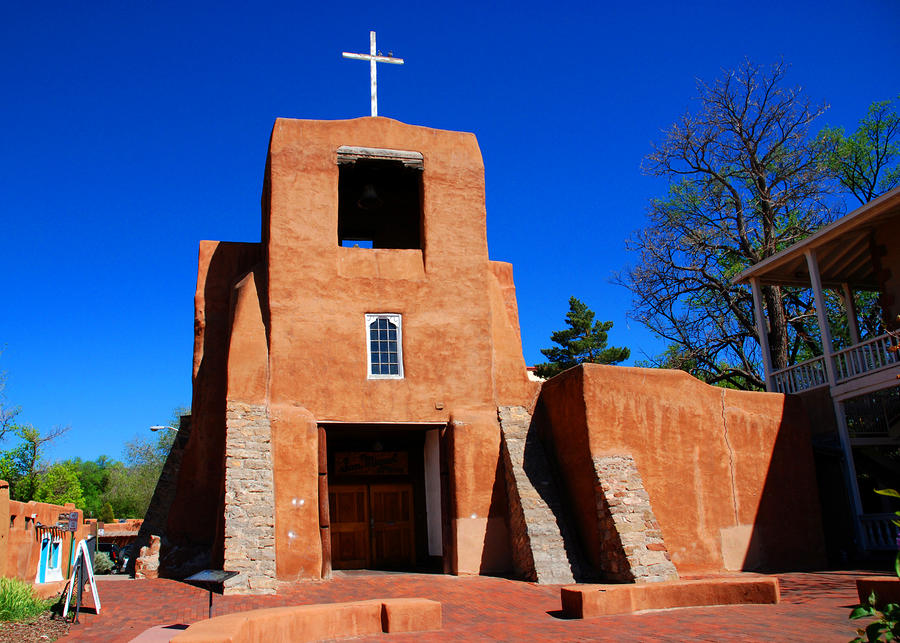The interior of the chapel is long and narrow consistent with Spanish Southwestern colonial mission architecture. The ceiling is supported by 20 hand carved wood vigas. A large wooden beam holds up the front of the choir loft in the back of the church. On it, carefully inscribed in Spanish, was written, " The Marquis of Penueala. The building was erected by the Royal Ensign Don Augustus Flores Vergara, his servant, in 1710." Several religious paintings grace the walls. In the left rear of the chapel is an early reproduction of Our Lady of Guadalupe. Facing the altar, the painting on the left on buffalo hide is of Christ on the Cross, the painting on the right on deer skin is of Saint John the Baptist. These were painted by he Franciscan friars around 1630 and were used as teaching aids in their work of converting the Indians. Directly to the left of the altar is a painting of the Annunciation, believed to be the work of a disciple of the Spanish painter Murillo. To the right of the altar is an encased Penitente carving of the crucifixion from the early 1700's. The oldest reredos in New Mexico hangs as the backdrop to the altar. This wooden structure which was hand carved and painted in 1798 contains a statue of San Miguel, the patron of the Mission Church. This statue was carved in old Mexico in the 1600's and was brought by the Franciscan missionaries to Santa Fe. Above the statue of San Miguel is a painting of Christ the Nazarene. The 4 oval paintings on the reredos date back over three hundred years. The oval painting at the top to your left is St. Theresa of Avila. Below it is Saint Francis of Assisi. To the right is Saint Gertrude of Germany, and below is Saint Louis IX, king of France.
In 1955 the Christian brothers commissioned an archaeological study of the ancient chapel. The investigation revealed the original sanctuary dirt floor and altar steps as well as the adobe walls burned during the Pueblo rebellion. The dig also uncovered 300 human remains, most believed to be the devout Tlaxcalan Indians, buried beneath the sanctuary floor. The Franciscans, in those ancient days, often made arrangements for the dead to be interred, if possible, under the altar of their Catholic Church in the hope of being remembered in the prayers of the faithful who attended Mass there. On the Sunday I participated in Mass at San Miguel Mission, the history of this Mission church reminded me of the early Christians who settled in New Mexico, their diversity reflected in our contemporary Southwestern Christian population, their perseverance and sacrifice a testimonial to the staying power of their faith, passed on to us. I encourage all Christian pilgrims to visit San Miguel Mission and to remember in their prayers those who first brought the Christian faith to New Mexico.
For more history of San Miguel Mission in Santa Fe click on
SAN MIGUEL MISSION - Rozylowicz
www.rozylowicz.com/pdf-files/mission.pdf




No comments:
Post a Comment